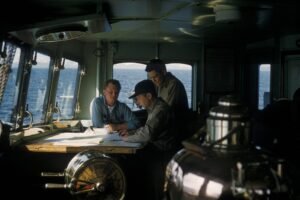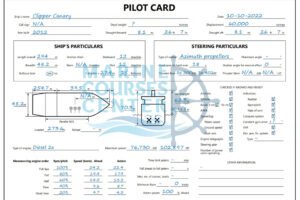What is a Deck Log Book on Ships and Entries Made in It?

What is a Deck Log Book on Ships and Entries Made in It?
A deck log book is a vital document that records all essential information related to the ship’s navigation and operation. It serves as evidence in case of any accidents or casualties and is considered an official document. In this article, we will discuss what a deck log book is and the entries that need to be made in it.

What is a Deck Log Book?
A deck log book is a document used to record all navigational and operational activities on a ship. It is an official document that is used to maintain a permanent record of the ship’s activities, including its location, speed, course, weather conditions, and any other important information. The log book is also used to record the activities of the ship’s crew, such as inspections, drills, and training.
Entries Made in the Deck Log Book
There are specific entries that must be made in the deck log book, which include the following:
When Vessel at Sea
- Routine navigational information – This includes the ship’s position at regular intervals and the method of position fixing, courses steered, allowances made for compass error, leeway, and set.
- Standard meteorological data – This information must be monitored and logged down in every watch.
- Record of navigational and pilotage events during watch.
- Behavior of vessel and effect of heavy seas.
- Change from hand to auto steering and vice versa, including trial of hand steering every watch.
- Verification of compass error, including mention if unobtainable.
- Record of inspections, training, and emergency drills (weekly or monthly as per drill schedule).
- Soundings of all compartments, including hold bilges, ballast tanks, fresh-water and oil-fuel tanks, cofferdams, void spaces, chain lockers, and other spaces should be taken and recorded in the log book or separate sounding book at least once daily.
When Vessel in Port
- Trim, stability, and stress calculations – The trim, stability, and stress must be monitored and recorded in every watch. It is prudent to print and retain hard copies of the calculations.
- Draught survey calculations – The ship’s calculations of the quantity of cargo by draught survey should be retained for inspection at a later date, if required.
- Cargo book – It has become standard practice on all types of ships to include a note of cargo loaded or discharged on the ship’s ports of call list or voyage memo, but more information can be valuable.
- Visits by various officials and authorities.
- A Statement of Facts (SOF) – This is normally produced by the ship’s agent to cover the time spent in a loading or discharge port. The shipmaster should satisfy himself before signing the statement that the information it contains is accurate, since it will be used to calculate the value of any demurrage or despatch payments or to settle any disputes that may arise regarding the voyage.
- Time of commencement and ceasing of cargo work.
- Any interruption or stoppages during cargo work and their reason.
Conclusion
The deck log book is a crucial document that records all navigational and operational activities on a ship. It serves as evidence in case of any accidents or casualties and is considered an official document. Entries that must be made in the deck log book include routine navigational information, standard meteorological data, records of navigational and pilotage events, behavior of the vessel and effect of heavy seas, verification of compass error, records of inspections, training, and emergency drills, soundings of all compartments, and records of trim, stability, and stress calculations, among others.














